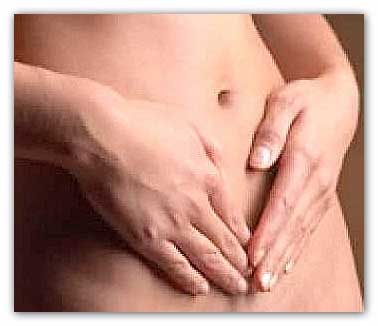|
There’s more concerning news for postmenopausal hormone replacement therapy (HRT) containing only estrogen, according to results from a new study. Researchers have found that postmenopausal women who reported taking postmenopausal hormone therapy with estrogen for five years or more were more likely to develop urinary incontinence (UI) than were women who took estrogen for less than five years or not at all.

“The incidence of urinary incontinence increases as a woman ages and after menopause,” says Gina Northington, MD, PhD, first author on the paper. “Results from the Women’s Health Initiative (WHI) and other observational studies have shown a relationship between the use of postmenopausal HRT and incident urinary incontinence during follow-up. However, many of these studies were conducted in largely homogeneous populations without looking at patients’ other health
conditions.”
Gina Northington, MD, PhD, assistant professor in the Department of Gynecology and Obstetrics, Emory University School of Medicine, and director of the Division of Female Pelvic Medicine and Reconstructive Surgery at Emory, is the first author on the paper. Northington, a new faculty member at Emory, completed the research while on the faculty at the University of Pennsylvania.
Hormone replacement therapy is used to supplement the body with either estrogen alone or estrogen and progesterone during and after menopause. Estrogen and progesterone are hormones that are produced by a woman's ovaries. When the ovaries no longer produce adequate amounts of these hormones (as in menopause), postmenopausal HRT can be given to supplement the body with adequate levels.
Northington’s study involved interviewing postmenopausal women in an ethnically diverse community in Baltimore who initially reported no symptoms of urinary incontinence. The women were already a part of an ongoing prospective observational study conducted by the National Institute of Mental Health and were followed for 10 years.
The women were surveyed in 1993 about self-reported estrogen use and signs of UI and then again in 2004. They were also asked about condition-specific functional loss associated with UI, meaning how a woman is functioning with urinary incontinence and if they are avoiding certain social and physical activities because of the
problem.
Among the 167 postmenopausal women surveyed who did not report UI in 1993, 47 (28.1 percent) reported new incidences of UI, and 31 (18.6 percent) reported new incidences of UI with condition-specific functional loss in 2004.
Of the 167 postmenopausal women, 46 (27.5 percent) reported using hormone therapy containing estrogen, and 14 (8.3 percent) women reported using hormone therapy containing estrogen for five years or more in 1993.
According to the researchers, estrogen use for five years or more was significantly associated with development of UI with condition-specific functional loss, compared with estrogen use for less than five years, or having no reported history of estrogen use at all.
“Our findings join a growing body of literature that suggests that postmenopausal hormone therapy increases the risk of developing urinary incontinence,” explains Northington. “Many patients are no longer taking HRT because of the 2002 WHI findings that showed risks of breast cancer, heart disease and stroke. But for those who still need estrogen to help with postmenopausal symptoms such as hot flashes, they are given the lowest dose possible for the shortest amount of time.” Northington goes on to say, “It’s important that doctors counsel their patients on the length of time they should take estrogen.”
Northington and her co-investigators at the University of Pennsylvania confined their analysis to self-reported use of estrogen only. The researchers were not able to determine the specific risk associated with the combined use of estrogen and progesterone. Because this was a small study, few definitive conclusions can be made. However, the study was strengthened because the participants were followed for 10 years.
More research is also needed to understand how HRT affects the bladder and urethral function to promote UI, and to identify other therapies that will treat menopausal symptoms without the adverse effects of
UI.
The article was published online in Menopause: The Journal of the North American Menopause Society on Oct. 13, 2011. It will be published in print in the March 2012 (Volume 19, Issue 3) edition of the journal.
Source
Emory University - Woodruff Health Sciences Center
(MDN)
|
![]()